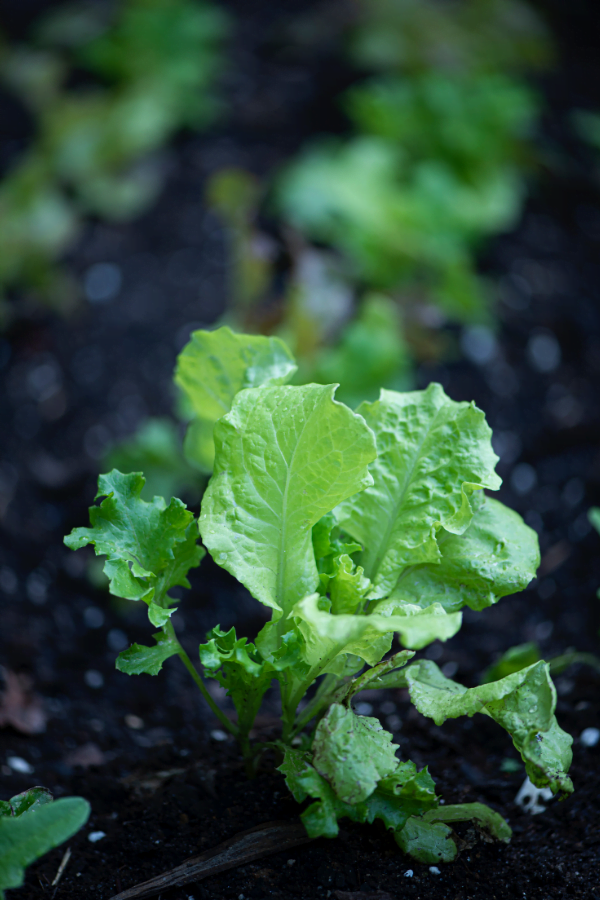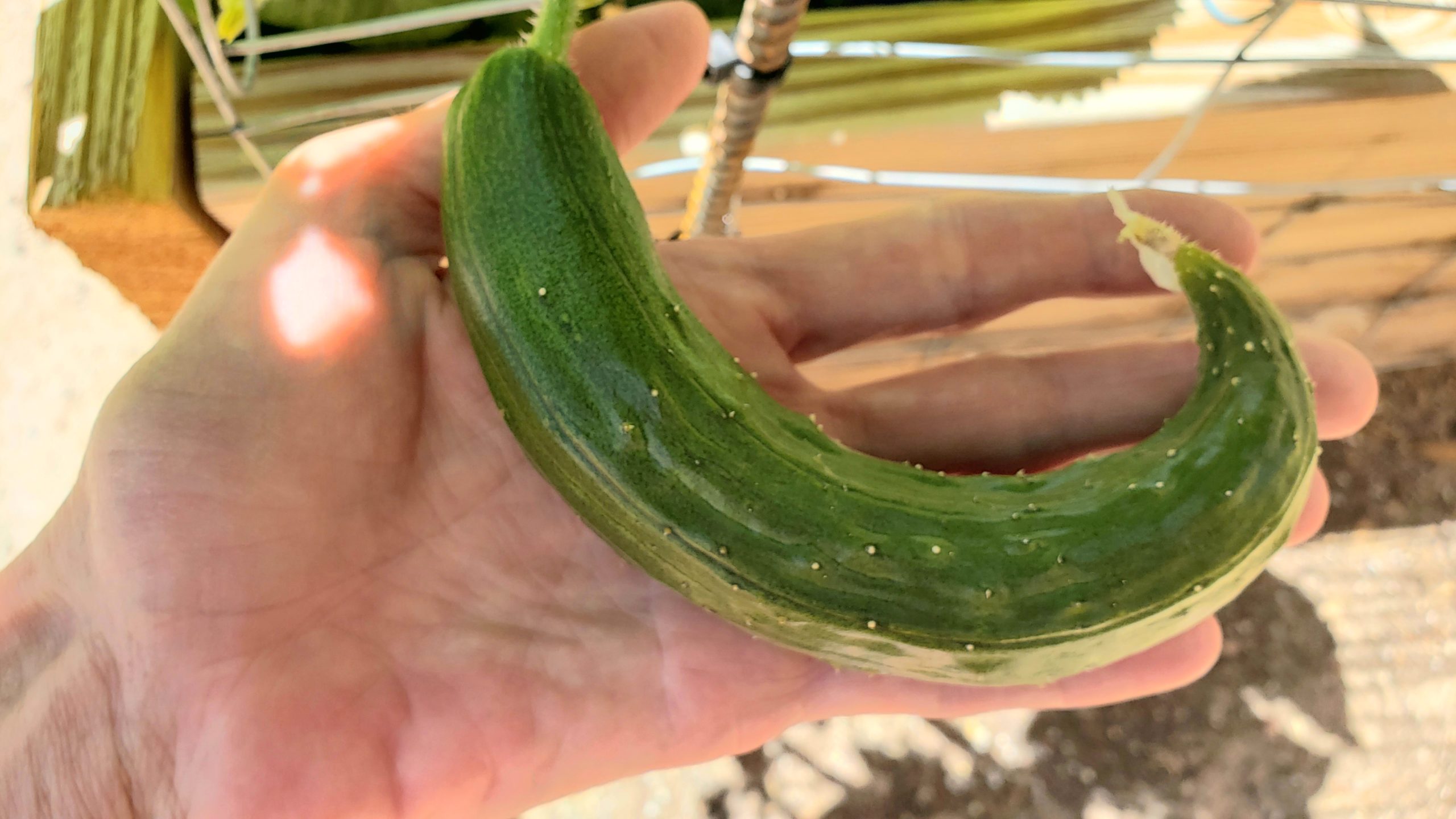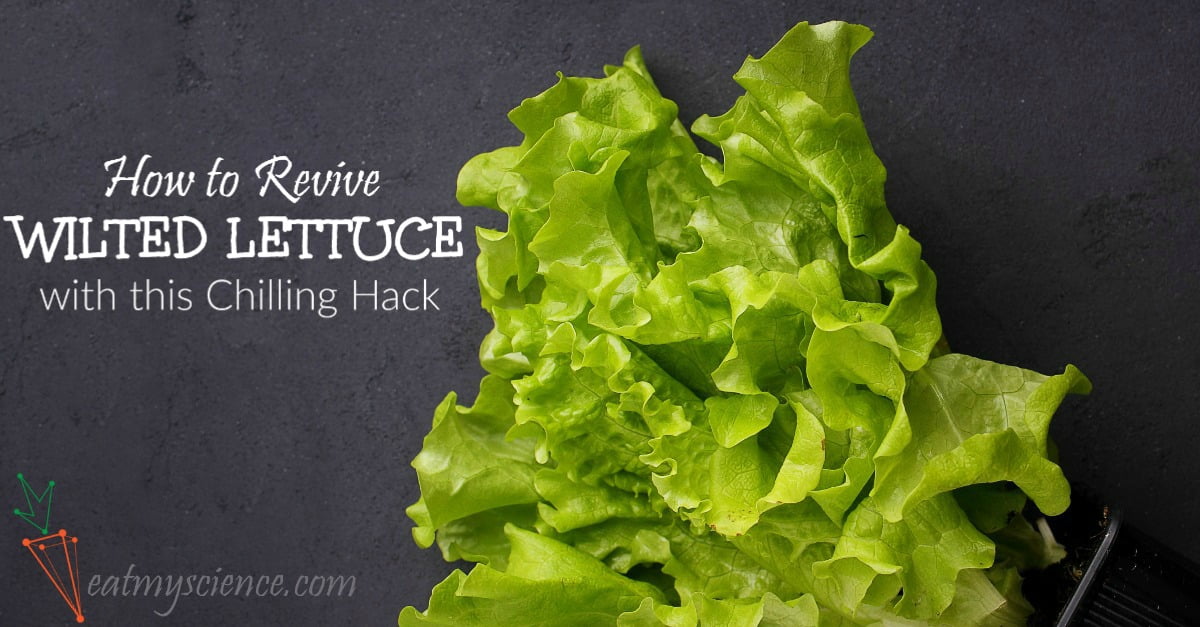So you’ve decided to grow your own lettuce, good for you! But now you may be wondering, how do you properly water your lettuce? Well, fret not because we’ve got all the tips and tricks for you. From the right amount of water to the perfect watering schedule, this article will guide you through the process of keeping your lettuce hydrated and thriving. With our expert advice, you’ll have your lettuce growing beautifully in no time. So grab your watering can and let’s get started!
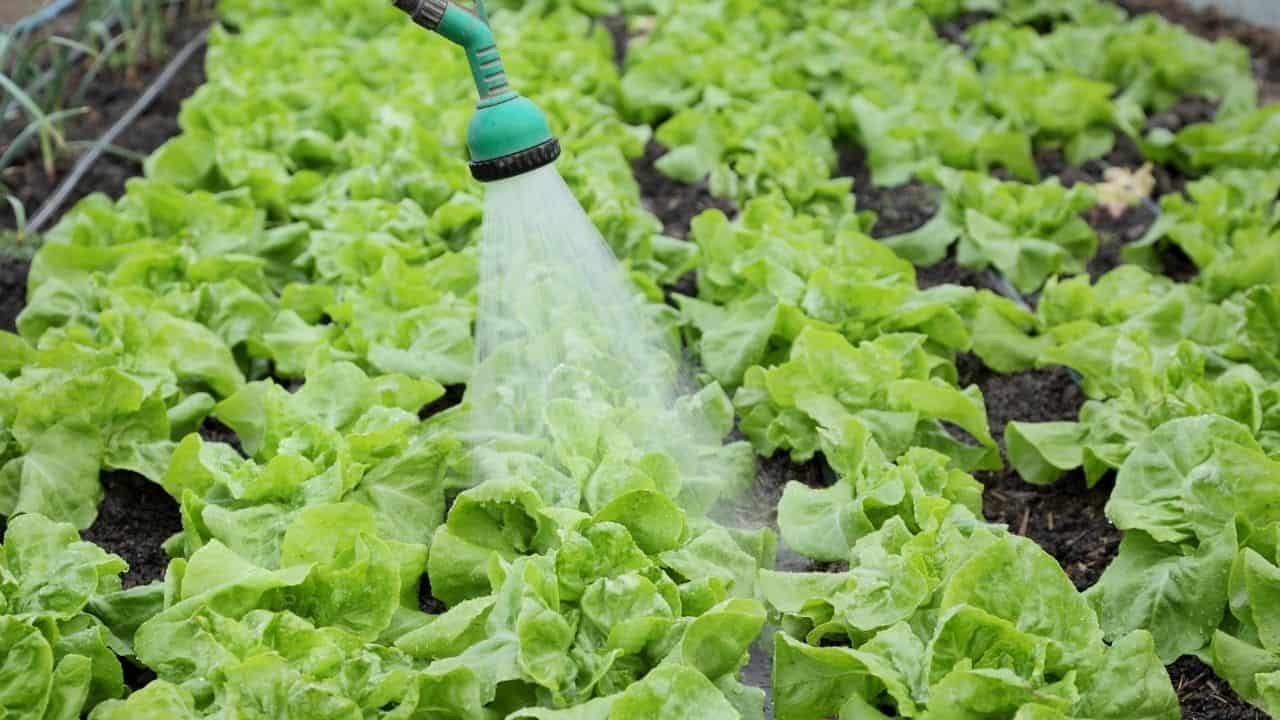
Understanding the Watering Needs of Lettuce
Lettuce is a popular leafy green vegetable that requires proper watering in order to grow and thrive. Understanding the watering needs of lettuce is essential for successful cultivation. This section will delve into the different types of lettuce and their watering requirements, as well as the factors that can affect these needs. Additionally, we will explore the signs of both underwatering and overwatering in lettuce to help you identify and address any watering issues.
Different types of lettuce and their watering requirements
Lettuce comes in various types, including loose-leaf, butterhead, romaine, and iceberg. Each type has its own unique characteristics and watering requirements. Loose-leaf lettuce, for example, has shallow roots and therefore requires more frequent watering compared to other types. On the other hand, romaine lettuce has deeper roots and can tolerate slightly drier soil conditions.
To determine the specific watering needs of the lettuce variety you are growing, it is best to refer to reliable gardening resources or consult with experienced gardeners. This will ensure that you provide the appropriate amount of water for optimal growth and avoid potential problems caused by either underwatering or overwatering.
Factors affecting the watering needs of lettuce
Several factors can influence the watering needs of lettuce. One crucial factor is the climate in which you are cultivating your lettuce. In hot and dry regions, for instance, lettuce will require more frequent watering to compensate for the rapid evaporation of moisture from the soil. Similarly, lettuce grown in containers or raised beds may require more frequent watering due to the limited soil volume.
Another factor to consider is the quality of the soil. Well-draining soil is essential for preventing waterlogged conditions that can lead to root rot and other diseases. Clay or compacted soil can hinder the drainage and may require adjustments in watering frequency to avoid potential issues.
Signs of underwatering and overwatering in lettuce
Identifying the signs of both underwatering and overwatering in lettuce is crucial for determining the appropriate watering practices. Underwatering can manifest as wilting leaves, drooping plants, and a generally dehydrated appearance. The leaves may feel dry and brittle to the touch. In severe cases, the lettuce heads may begin to bolt or prematurely flower.
In contrast, overwatering can cause the lettuce leaves to become yellow or pale, and the plant may appear limp or wilted, despite the soil being moist. Overwatered lettuce is also susceptible to root rot and other fungal diseases, which can further worsen the condition of the plants.
Determining the Right Watering Schedule
Establishing an appropriate watering schedule is crucial for lettuce cultivation. Consistent and regular watering helps maintain optimal moisture levels in the soil and ensures healthy growth. In this section, we will discuss the importance of regular watering, adjusting watering frequency based on weather conditions, and the specific watering needs of lettuce in different growth stages.
The importance of regular watering
Lettuce is a fast-growing plant that requires consistent moisture to develop tender leaves and prevent bitterness. Regular watering allows the plant to take up nutrients and maintain its turgidity, resulting in crisp and flavorful lettuce. By adhering to a regular watering schedule, you can provide a stable environment for your lettuce plants, promoting healthy and vigorous growth.
Adjusting the watering frequency based on weather
Adapting your watering schedule to the weather conditions is essential for meeting the changing needs of your lettuce plants. During hot and dry periods, it may be necessary to increase the frequency of watering to prevent the soil from drying out too quickly. Conversely, during cooler and more humid weather, you may need to reduce watering frequency to prevent over-saturation of the soil.
Monitoring the moisture levels of the soil is a helpful practice to determine when to water and when to hold back. Feel the top inch of soil with your finger; if it feels dry, it’s time to water. However, if the soil feels slightly moist, it is best to wait before watering to avoid overwatering and potential problems.
Watering lettuce in different growth stages
Lettuce goes through different growth stages, each with its own specific water requirements. During the germination and establishment stage, it is crucial to keep the soil consistently moist to facilitate seed germination and encourage root development. This stage often requires more frequent watering, as the lettuce plants are not yet established and have shallow root systems.
As the lettuce plants mature and form their heads or leaves, they may require less frequent watering. However, it is still important to ensure that the soil remains evenly moist throughout the growing period. Carefully monitor the soil moisture levels and make adjustments to your watering schedule as necessary to support healthy growth and prevent stress to the plants.
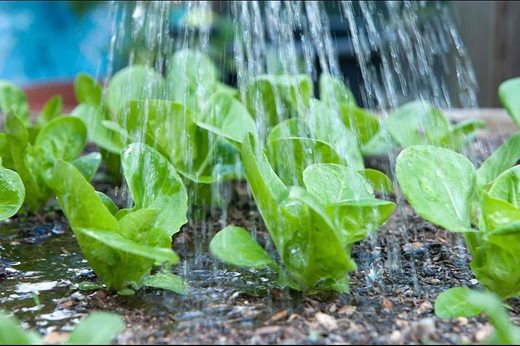
Choosing the Right Watering Method
Selecting the appropriate watering method for your lettuce plants is essential for efficient water delivery and optimal plant health. In this section, we will discuss the differences between hand watering and drip irrigation, explore the use of a watering can, and consider the benefits of utilizing a sprinkler system.
Hand watering vs. drip irrigation
Hand watering involves using a hose or watering container to apply water directly to the base of the lettuce plants. This method allows for targeted water delivery, ensuring that the roots receive adequate moisture without wetting the foliage excessively. Hand watering can be useful for small-scale lettuce gardens or when individual attention is required for specific plants.
On the other hand, drip irrigation systems provide a more automated and efficient watering method. These systems use tubes with emitters that slowly release water directly to the plant roots, minimizing water waste and reducing the risk of fungal diseases. Drip irrigation is particularly beneficial for larger lettuce gardens or gardeners looking for a more hands-off approach to watering.
Using a watering can
A watering can is a versatile tool that can be used to apply water gently and directly at the base of lettuce plants. It is ideal for small gardens or when you need more control over the amount of water being delivered. When using a watering can, ensure that you pour the water slowly and evenly to allow for proper absorption by the soil.
Utilizing a sprinkler system
A sprinkler system is another option for watering lettuce, especially in larger gardens or when a broader coverage area is desired. Sprinklers distribute water over a larger area, providing a good soaking for the plants and the surrounding soil. However, it is important to note that using sprinklers can wet the lettuce foliage, which may increase the risk of fungal diseases, especially if the plants are not given sufficient time to dry before evening.
Watering Techniques for Lettuce
Adopting proper watering techniques is essential for ensuring that lettuce receives adequate moisture without experiencing water-related issues. In this section, we will explore techniques such as watering the soil, avoiding excessive water runoff, deep watering for healthier roots, and the use of mulch to retain moisture.
Watering the soil, not the leaves
When watering lettuce plants, it is crucial to focus on watering the soil rather than the leaves. Watering the leaves excessively can lead to various issues, such as fungal diseases and sunscald. Aim to deliver water directly to the base of the plants, allowing it to soak into the soil and reach the root zone where it is most needed.
Avoiding excessive water runoff
To minimize water runoff and maximize water absorption, it is advisable to water your lettuce plants slowly and evenly. Applying water too quickly or in large quantities can cause excess runoff, which not only wastes water but also leads to inefficient hydration of the plant roots. By watering gently and providing enough time for the water to be absorbed, you can ensure that the moisture penetrates deeper into the soil.
Deep watering for healthier roots
Encouraging deep root growth is important for the overall health and resilience of lettuce plants. Deep watering involves applying water for a longer duration, allowing it to penetrate deeper into the soil. This technique promotes the development of a sturdy root system that can access water and nutrients more efficiently. However, it is essential to strike a balance and avoid overwatering, as excessively wet soil can also harm the roots.
Mulching to retain moisture
Mulching is a valuable technique for retaining moisture in the soil and reducing water evaporation. Applying a layer of organic mulch, such as straw or shredded leaves, around the lettuce plants helps to maintain a more consistent soil moisture level. Mulch acts as a barrier, preventing water from evaporating rapidly and reducing weed growth, which can compete with lettuce plants for water and nutrients.
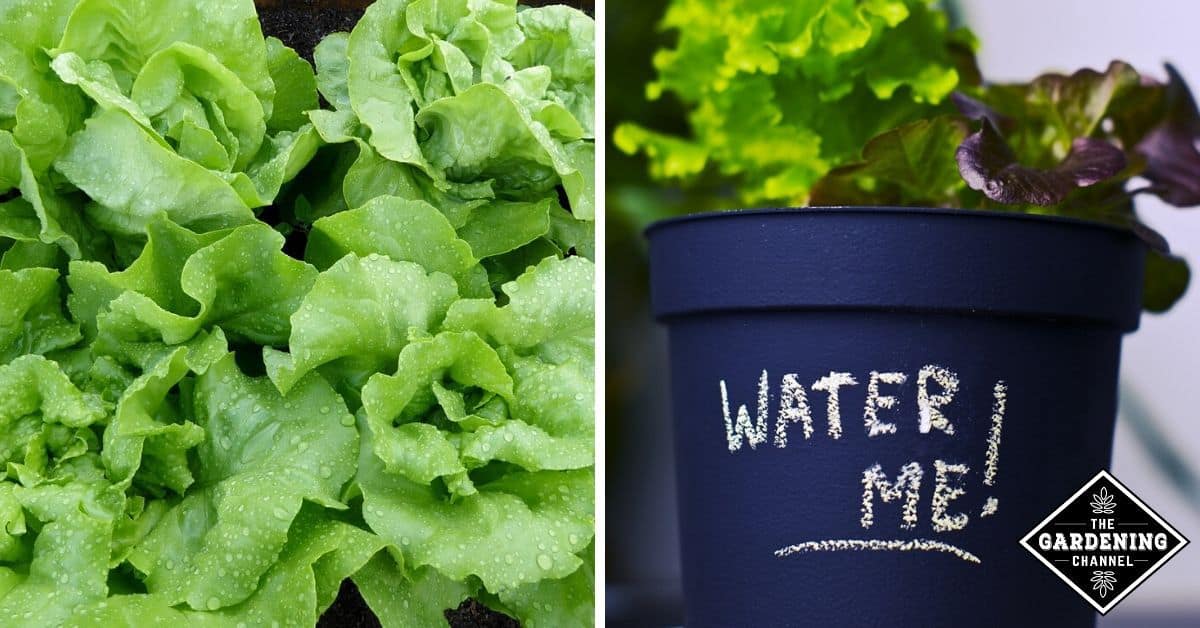
Proper Watering Amount for Lettuce
Determining the appropriate amount of water to give to lettuce is crucial for its health and productivity. In this section, we will explore the water requirements of lettuce, discuss methods for measuring soil moisture, and provide guidance on how to determine the correct amount of water per watering.
Understanding lettuce’s water requirements
Lettuce generally requires consistent moisture throughout its growth cycle. The goal is to keep the soil moist but not overly saturated. As a general guideline, lettuce typically needs around 1 inch of water per week, either from rainfall or irrigation. However, it is important to monitor the specific conditions in your garden and adjust accordingly.
Determining the appropriate amount of water per watering
To determine the appropriate amount of water to give to your lettuce plants during each watering session, consider the following factors:
- Soil type: Sandy soil generally drains faster and may require more frequent but smaller waterings, while clay soil holds onto moisture longer and may require less frequent but deeper waterings.
- Stage of growth: Younger lettuce plants generally require less water per watering compared to more mature plants with developed root systems.
- Weather conditions: Hot and dry weather will increase water evaporation rates, necessitating more frequent watering sessions.
It is important to strike a balance between providing enough moisture for healthy growth and avoiding overwatering. Observing the condition of the plants, testing soil moisture, and adjusting watering practices accordingly will help you fine-tune the amount of water needed for your lettuce.
Measuring soil moisture
Measuring the moisture content of the soil is an effective way to determine when to water your lettuce plants. One simple method is to insert your finger into the soil, carefully feeling for moisture. If the soil feels slightly moist to the touch, it indicates that it has adequate moisture. However, if the soil feels dry, it is an indication that watering is required.
Another method is to use a moisture meter, which provides a more accurate reading of the soil moisture levels. These meters typically have a probe that can be inserted into the soil, giving you a digital or analog reading. Moisture meters are particularly useful for gardeners who want a more precise measurement of the soil moisture and want to avoid over or underwatering their lettuce plants.
Best Time of Day to Water Lettuce
Timing your watering correctly can significantly impact the health and vigor of your lettuce plants. In this section, we will explore the benefits of morning watering, reasons to avoid evening watering, and considerations for watering during hot weather.
Morning watering benefits
Watering your lettuce plants in the morning has several advantages. Firstly, morning watering allows the plants to take up moisture during the day, providing them with the necessary hydration to withstand heat and sunlight. Additionally, morning watering provides ample time for the leaves and soil surface to dry, reducing the risk of fungal diseases that thrive in moisture.
Furthermore, morning watering allows the plants to utilize the absorbed moisture efficiently throughout the day, enabling optimal growth and photosynthesis. By watering in the morning, you provide your lettuce plants with a refreshing start, setting them up for a productive day of growth.
Avoiding evening watering
It is generally recommended to avoid watering your lettuce plants in the evening, especially when the sun is setting. This is because wet foliage and soil during the night can create a favorable environment for fungal diseases, such as powdery mildew and downy mildew. These diseases thrive in cool and damp conditions, making evening watering a potential risk.
If evening watering becomes necessary due to time constraints or other factors, try to water early enough in the evening to allow the foliage and soil surface to dry before nightfall. This can help mitigate the risk of fungal diseases and prevent their spread among your lettuce plants.
Watering during hot weather
During periods of hot weather, lettuce plants may require additional hydration to cope with increased evaporation rates. If you are facing a heatwave or consistently high temperatures, you may need to consider additional watering to prevent the soil from drying out too quickly. Adjust your watering schedule accordingly and monitor the soil moisture levels more frequently to ensure the lettuce plants have enough water to withstand the heat stress.
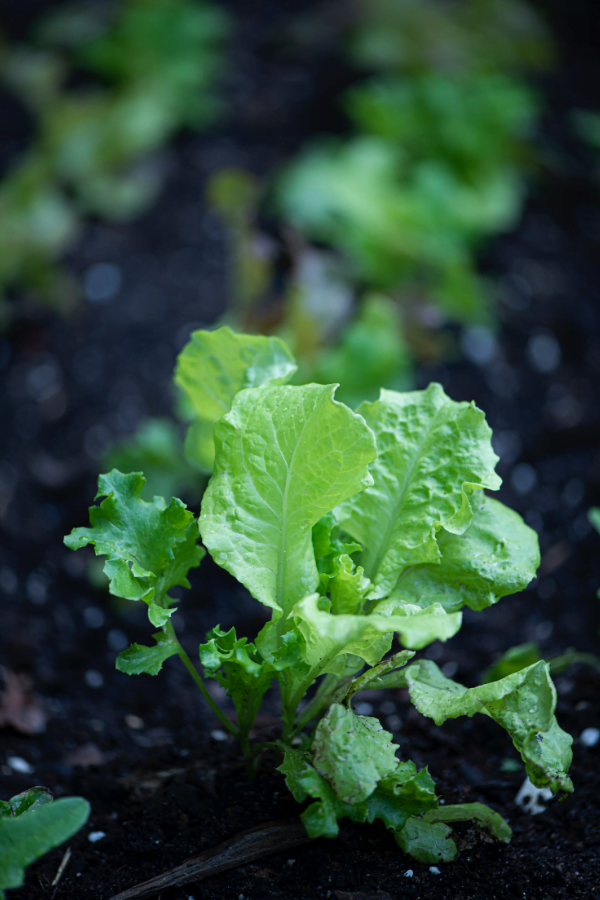
Additional Tips for Watering Lettuce
In addition to the main watering considerations discussed earlier, there are several additional tips to keep in mind when watering your lettuce plants. This section will cover consistency in watering, avoiding waterlogged soil, ensuring proper drainage for potted lettuce, and using recycled water responsibly.
Consistency in watering
Consistency is key when it comes to watering lettuce. Aim to provide a regular watering schedule that maintains a consistent level of moisture in the soil. Fluctuations in soil moisture can lead to stress on the plants, uneven growth, and potential issues such as bolting or bitterness. By establishing a consistent watering routine, you create a stable environment that promotes healthy and productive lettuce.
Avoiding waterlogged soil
While lettuce appreciates moist soil, it is important to avoid waterlogged conditions. Excessive water retention in the soil can suffocate the roots, cause root rot, and create anaerobic conditions that inhibit growth. To prevent waterlogged soil, ensure that your lettuce garden has adequate drainage. If the soil is heavy or has a tendency to retain excess moisture, consider amending it with organic matter, such as compost, to improve its drainage capacity.
Proper drainage for potted lettuce
Lettuce can also be grown in containers or pots, which requires special attention to drainage. To prevent waterlogging in potted lettuce, choose containers with drainage holes at the bottom. These holes allow excess water to escape, preventing water buildup and potential root problems. Before watering potted lettuce, check that water is able to drain freely from the container.
Using recycled water responsibly
In an effort to conserve water and reduce waste, some gardeners may choose to use recycled water for their lettuce plants. However, it is important to exercise caution when using recycled water, particularly if it contains detergents, chemicals, or excessive salts that could potentially harm the plants. If using recycled water, ensure that it is free from harmful additives and test the water periodically to ensure it is not causing any adverse effects on your lettuce plants.
Rainwater vs. Tap Water for Lettuce
The source of water used for irrigating lettuce can have an impact on the plants’ health and vitality. In this section, we will explore the benefits of using rainwater and consider important factors when using tap water.
Benefits of using rainwater
Rainwater is often considered the ideal water source for lettuce and other plants. It is naturally free of additives, such as chlorine, that may be present in tap water. Additionally, rainwater is typically pH-neutral, which is favorable for plant growth. Using rainwater also allows for the conservation of tap water and reduces the need for treated water in irrigation.
Collecting rainwater can be as simple as placing containers or barrels under downspouts to catch runoff from your roof. However, it is important to ensure that the collection system is clean and free from potential contaminants that could have negative effects on your lettuce plants.
Considerations when using tap water
While tap water is readily accessible for many gardeners, there are a few considerations to keep in mind when using it to water lettuce plants. Tap water often contains additives, such as chlorine or chloramine, intended to kill harmful bacteria. While these additives are generally safe for human consumption, they can potentially harm beneficial microorganisms in the soil and affect the overall health of your lettuce plants.
One way to address this issue is to let tap water sit for a few days before using it for irrigation. This allows the chlorine and other additives to dissipate naturally through evaporation. Alternatively, you can use a water filter designed to remove chlorine and other impurities from tap water before using it in your garden.

Monitoring and Adjusting Watering Practices
Regularly monitoring and adjusting your watering practices is crucial for the ongoing success of your lettuce plants. In this section, we will explore the importance of observing soil moisture, making adjustments based on plant response, and utilizing moisture meters for accuracy.
Regular observation of soil moisture
Consistently monitoring the moisture levels of the soil is crucial for determining when and how much to water your lettuce plants. By observing the soil moisture, you can gather valuable information about the overall hydration status of the plants and make informed decisions about watering frequency and amount.
Adjusting watering practices based on plant response
Plants are excellent communicators, and their response to watering practices can provide valuable feedback. By observing their growth, appearance, and overall health, you can gauge whether your lettuce plants are receiving adequate or excessive moisture.
If your lettuce plants consistently exhibit signs of underwatering, such as wilting or dry leaves, it may indicate the need for more frequent or deeper watering. Similarly, if the plants show signs of overwatering, such as yellowing leaves or stunted growth, it may be necessary to adjust your watering practices to prevent waterlogged soil.
Using moisture meters for accuracy
If you desire a more accurate measurement of soil moisture, consider utilizing a moisture meter. These devices allow you to directly measure the moisture content at various depths in the soil, providing you with a more objective reading. By using a moisture meter, you can fine-tune your watering practices and ensure that your lettuce plants receive the optimal amount of moisture for their growth.
Troubleshooting Watering Issues
While proper watering practices are essential for healthy lettuce plants, issues may still arise. This section will cover common watering issues, such as wilting lettuce, recommendations for addressing overwatering, and tips for preventing fungal diseases.
Dealing with wilting lettuce
Wilting lettuce is often a sign of inadequate moisture, but it can also indicate other underlying issues. If your lettuce plants appear wilted, take immediate action to restore moisture. Water the plants deeply and ensure that the soil is thoroughly soaked. Providing shade during the hottest parts of the day can also help alleviate stress on the plants.
If wilting persists despite providing ample water, inspect the plants for any signs of pests, diseases, or root issues. Addressing these factors promptly can help revive your lettuce plants and prevent further damage.
Recommendations for addressing overwatering
If your lettuce plants show signs of overwatering, such as yellowing leaves or stunted growth, it is crucial to address the issue promptly to prevent further damage. To address overwatering:
- Allow the soil to dry out partially before watering again. This will give the plant roots an opportunity to recover from the excess moisture.
- Improve soil drainage by incorporating organic matter, such as compost, into the soil. This will help improve water percolation and reduce waterlogged conditions.
- Adjust your watering schedule and frequency to prevent overwatering in the future. Monitor the soil moisture levels more closely and provide water only when needed.
Preventing fungal diseases
Fungal diseases can be a common problem in lettuce plants, especially when the foliage and soil remain excessively moist. To prevent fungal diseases:
- Water the plants in the morning to allow sufficient drying time during the day.
- Avoid excessive watering or drifting water onto the leaves, as this creates a favorable environment for fungal growth.
- Utilize proper spacing between the lettuce plants to promote airflow and minimize humidity buildup.
If fungal diseases do occur, consider using organic fungicides or natural remedies to address the issue. Alternatively, consult with a local gardening expert for specific recommendations regarding the control and prevention of fungal diseases in your region.
By understanding the watering needs of lettuce, determining the right watering schedule, choosing the appropriate watering method, and adopting proper watering techniques, you can ensure the healthy growth and productivity of your lettuce plants. Remember to monitor and adjust your watering practices based on plant response and use preventive measures to address potential issues. With proper watering, your lettuce will thrive and provide you with delicious, homegrown greens for salads, sandwiches, and more!
